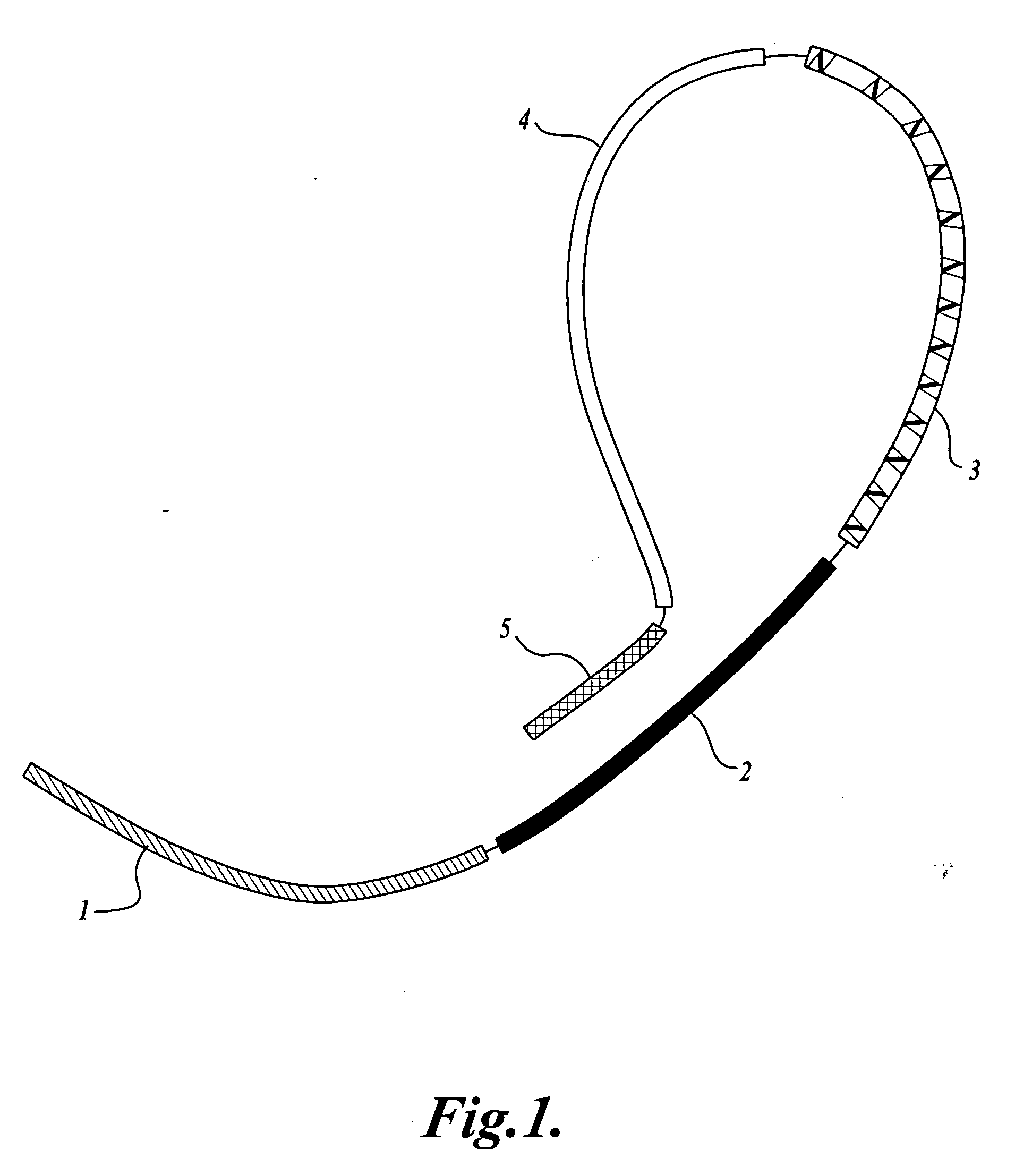Molecular encoding of nucleic acid templates for PCR and other forms of sequence analysis
- Summary
- Abstract
- Description
- Claims
- Application Information
AI Technical Summary
Benefits of technology
Problems solved by technology
Method used
Image
Examples
example 1
[0043] This example describes an exemplary method of the invention for authenticating a PCR product from the FMR1 locus by using a bar-coded oligonucleotide with a 5-nucleotide random barcode.
[0044] 1. Materials and Methods
[0045] Target DNA: Human genomic DNA was isolated from blood using a standard protocol. DNA samples were obtained from blood treated with proteinase K, then recovered using a phenol extraction. Isolated DNA was resuspended in TE buffer and stored at −20° C.
[0046] Bar-coded Oligonucleotide: Oligo HBP (5′ ACATGCATGTCTTCAAAGTGG NNNNN AGGAGGG GCATGT TCTCTCTTCAAGTGGCCTGGGAGC 3′, SEQ ID NO:10). From 5′ to 3′, oligo HBP contains a unique, non-genomic sequence (5′ ACATGCATGTCTTCAAAGTGG 3′, SEQ ID NO:11) that provides a leftward primer binding site (region (4) in FIG. 1); a 5-nucleotide random barcode (NNNNN; region (3) in FIG. 1); a batch-stamp (5′ AGGAGGG 3′; region (2) in FIG. 1); an internal tethering sequence (5′ GCATGT 3′) that is complementary to the first 6 nucl...
example 2
[0054] This example describes an exemplary method of the invention for authenticating a PCR product from the FMR1 locus by using a bar-coded oligonucleotide with a 7-nucleotide random barcode.
[0055] 1. Materials and Methods
[0056] Target DNA: Human genomic DNA was isolated as described in EXAMPLE 1.
[0057] Bar-coded Oligonucleotide: Oligo MLM1 (5′ ACATGCATGTCTTCAAAGTGG NNNNNNN CGATTGT GCATGT CCTCTCTCTTCAAGTGGCCTGGGAGC 3′, SEQ ID NO: 16). From 5′ to 3′, oligo MLM1 contains a unique, non-genomic sequence (5′ACATGCATGTCTTCAAAGTGG 3′, SEQ ID NO:11) that provides a leftward primer binding site (region (4) in FIG. 1); a 7-nucleotide random barcode (NNNNNNN; region (3) in FIG. 1); a batch-stamp (5′CGATTGT 3′; region (2) in FIG. 1); an internal tethering sequence (5′ GCATGT 3′) that is complementary to the first 6 nucleotides of the leftward primer binding site (i.e., complementary to region (5) in FIG. 1); and a 24-nucleotide sequence complementary to FMR1 (region (1) in FIG. 1). A bar-co...
example 3
[0065] This Example describes an exemplary method of the invention for authenticating a PCR product from the FMR1 locus by using two bar-coded oligonucleotides, each with a 7-nucleotide random barcode.
[0066] 1. Materials and Methods
[0067] Target DNA: Human genomic DNA was isolated as described in EXAMPLE 1.
[0068] Bar-coded Oligonucleotides: Oligo MLM3 (5′ACATGCATGTCTTCAAAGTGG NNNNNNN CTAGTGT GCATGT CCTCTCTCTTCAAGTGGCCTGGGAGC 3′, SEQ ID NO:17). From 5′ to 3′, oligo MLM3 contains a unique, non-genomic sequence (5′ ACATGCATGTCTTCAAAGTGG 3′, SEQ ID NO:11) that provides a leftward primer binding site (region (4) in FIG. 1); a 7-nucleotide random barcode (NNNNNNN; region (3) in FIG. 1); a batch-stamp (5′CTAGTGT 3′; region (2) in FIG. 1); an internal tethering sequence (5′ GCATGT 3′) that is complementary to the first 6 nucleotides of the leftward primer binding site (i.e., complementary to region (5) in FIG. 1); and a 24-nucleotide sequence complementary to FMR1 (region (1) in FIG. 1),...
PUM
| Property | Measurement | Unit |
|---|---|---|
| Composition | aaaaa | aaaaa |
Abstract
Description
Claims
Application Information
 Login to View More
Login to View More - R&D
- Intellectual Property
- Life Sciences
- Materials
- Tech Scout
- Unparalleled Data Quality
- Higher Quality Content
- 60% Fewer Hallucinations
Browse by: Latest US Patents, China's latest patents, Technical Efficacy Thesaurus, Application Domain, Technology Topic, Popular Technical Reports.
© 2025 PatSnap. All rights reserved.Legal|Privacy policy|Modern Slavery Act Transparency Statement|Sitemap|About US| Contact US: help@patsnap.com



